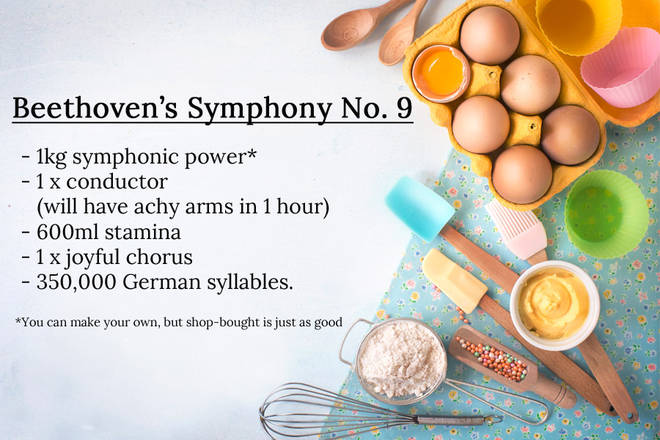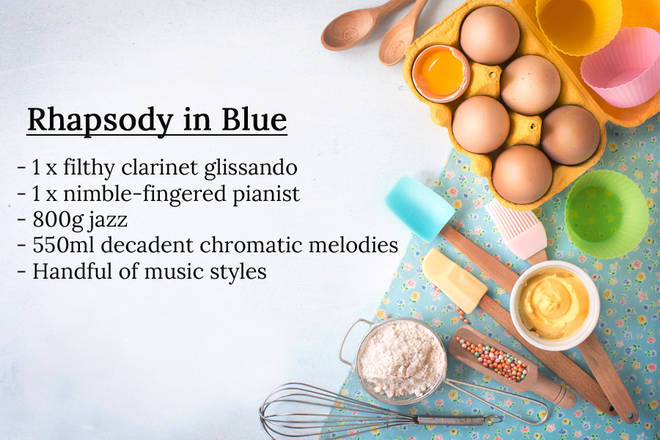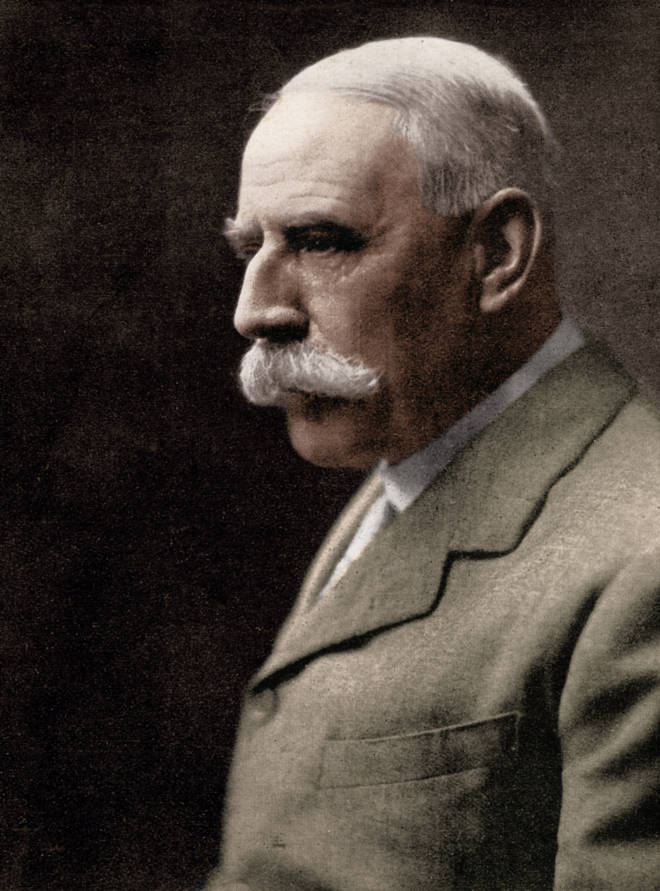The hidden meaning behind Cersei’s music in Game of Thrones
Spoilers are coming. Look away now if you haven’t seen Game of Thrones season 8, episode 5...
The penultimate episode of Game of Thrones aired in the US last night, showcasing Daenerys’ wrath, as she rained fire on King’s Landing.
But before that, there was a moment when the show gave a little nod to seasons past, as a familiar tune by played out amid the battle scenes.
You may not have caught it but there was a point, as Daenerys was busy torching the Lannister army and breaking down the ramparts of King’s Landing, at which the same sequence that was used in the ‘Light of the Sevens’ theme – which made its debut in the season 6 finale – played out ahead of Cersei’s demise.
So what is the significance of the theme in season 8, episode 5? We explain all...

Where does the music appear in season 8, episode 5?
As Daenerys rides on the back of Drogon, setting alight the walls of King’s Landing, we cut to a shot of Cersei Lannister, as she watches on helplessly from the Red Keep.
Cersei’s hand, Qyburn, comes into the room to inform her that the dragon has destroyed all the Scorpions (the specially designed, dragon-killing crossbows), and the Iron Fleet has been wiped out, along with the Golden Company’s soldiers. All they have left is the Lannister soldiers.
Despite the desperation of the situation, Cersei maintains: “They [her men] will defend the Red Keep to the last man. The Red Keep has never fallen, it won’t fall today.”
As she says this, that familiar starts pouring out, bringing a strong sense of foreboding.
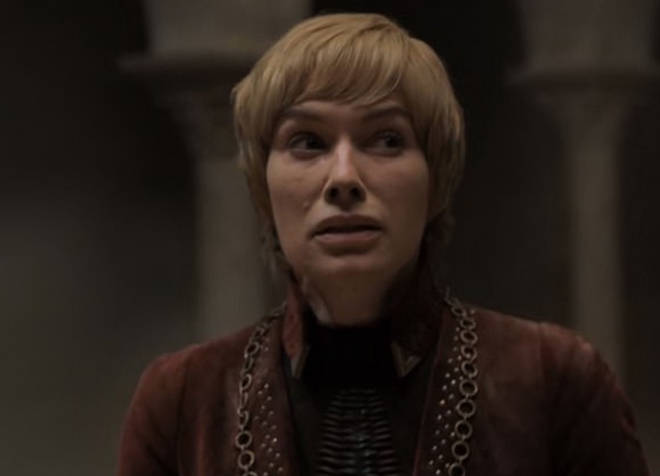
We then switch to a scene of her little brother, Tyrion, as he enters the walls of King’s Landing, horrified by Daenerys’ actions. While the cello part starts off slower than what it does in the ‘Light of the Seven’, it starts quickening in pace, swelling and building into a deafening crescendo.
The music pauses dramatically, as the last of the Lannister army drops their swords in defeat.
We then pan over the terracotta roofs of King’s Landing (presumably to emphasise that there are a lot of people living within the fortress’ walls that are about to be barbecued), to find Jaime pushing his way through the crowd in order to meet his twin sister one last time.

Moments later, the Red Keep is crumbling piece by piece, as Cersei, Qyburn and The Mountain descend the spiral staircase. Ser Gregor’s brother, The Hound, then meets them on their descent, in order to kill his older sibling. For the first time ever, The Mountain ignores his queen’s command, before killing Qyburn to fight his brother. The pair battle it out as the apocalyptic scenes play out around them.
Cersei managed to escape from the Red Keep’s tower, and Jaime finds her in the map room after he kills Euron Greyjoy. They embrace as the violin track trickles into the background. Jaime leads her into the underground passages in the hope of escaping. When they get there, they discover the path has been blocked with rubble, and they die in each other’s arms as their home falls down upon them.
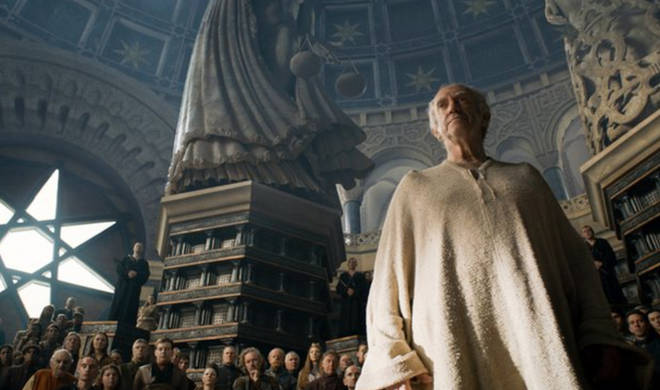
The ‘Light of the Seven’ theme in the season 6 finale
The last time we heard the ‘Light of the Seven’ theme was in the dramatic season 6 finale, when Cersei trapped her rivals in the Sept and blew it up using Wildfire.
Waiting in the Sept were the High Sparrow, Margaery Tyrell, her brother Loras, and their father Mace Tyrell.
After Loras renounced his ‘sins’ and was branded by the High Sparrows’ followers, Cersei was next to face trial. But in true Cersei fashion, she had no intention of attending her trial, but, rather, stayed in the Red Keep across from the Sept, to watch as the religious building went up in green flame.
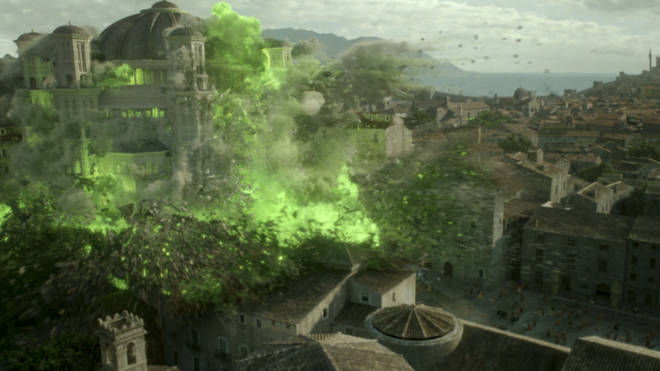
Before this iconic Game of Thrones scene, however, there was a beautiful choreographed sequence where the Sparrows were shot from above. As they gracefully move across the floor of the Sept, the ‘Light of the Seven’ starts playing, adding a sense of urgency and impending doom.
Unlike other Game of Thrones tracks, the ‘Light of the Seven’ is mostly played on the , which makes it all the more harrowing.
During the whole thing, Cersei used The Mountain to barricade her son Tommen in, who would otherwise have sought to help his doomed wife, Margaery, who was also in the Sept.
After witnessing the Sept blow up in a huge green explosion, King Tommen removed his crown, placed it on the table beside him and walked out of shot. The camera was still pointing to the arched windows of the Red Keep, as Tommen returned, and threw himself out the window, plummeting to his death. He was the last of Cersei’s children.
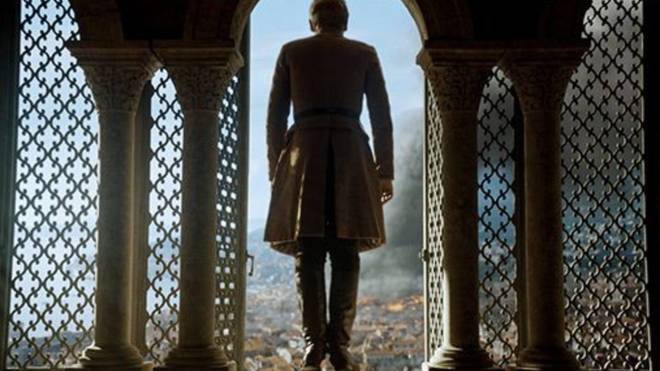
So why was it used again now?
The fact that show producers David Benioff and D.B. Weiss chose to use the haunting music again now is incredibly significant.
While there are slight changes to the piece, the key elements of the theme have gone unchanged. It is purposely slower than the original and sounds slightly more dissonant, but it foreshadows that bad things are ahead.
As we associate the heartbreaking tune with the mass murder in season 6, we already fear the worst before Daenerys wipes out the entire city. We sense what she is about to do and the harrowing music sets the scene.
It is important it returns now, as we’re seeing a lot of imagery that is similar to that of the season 6 finale; there’s a deadly explosion, a Mad Queen, innocent people are killed, and a significant building in King’s Landing crumbles to the ground.
Only time will tell what Queen Daenerys will do with her newfound power – and what the last few contenders for the Iron Throne will do, for that matter.





